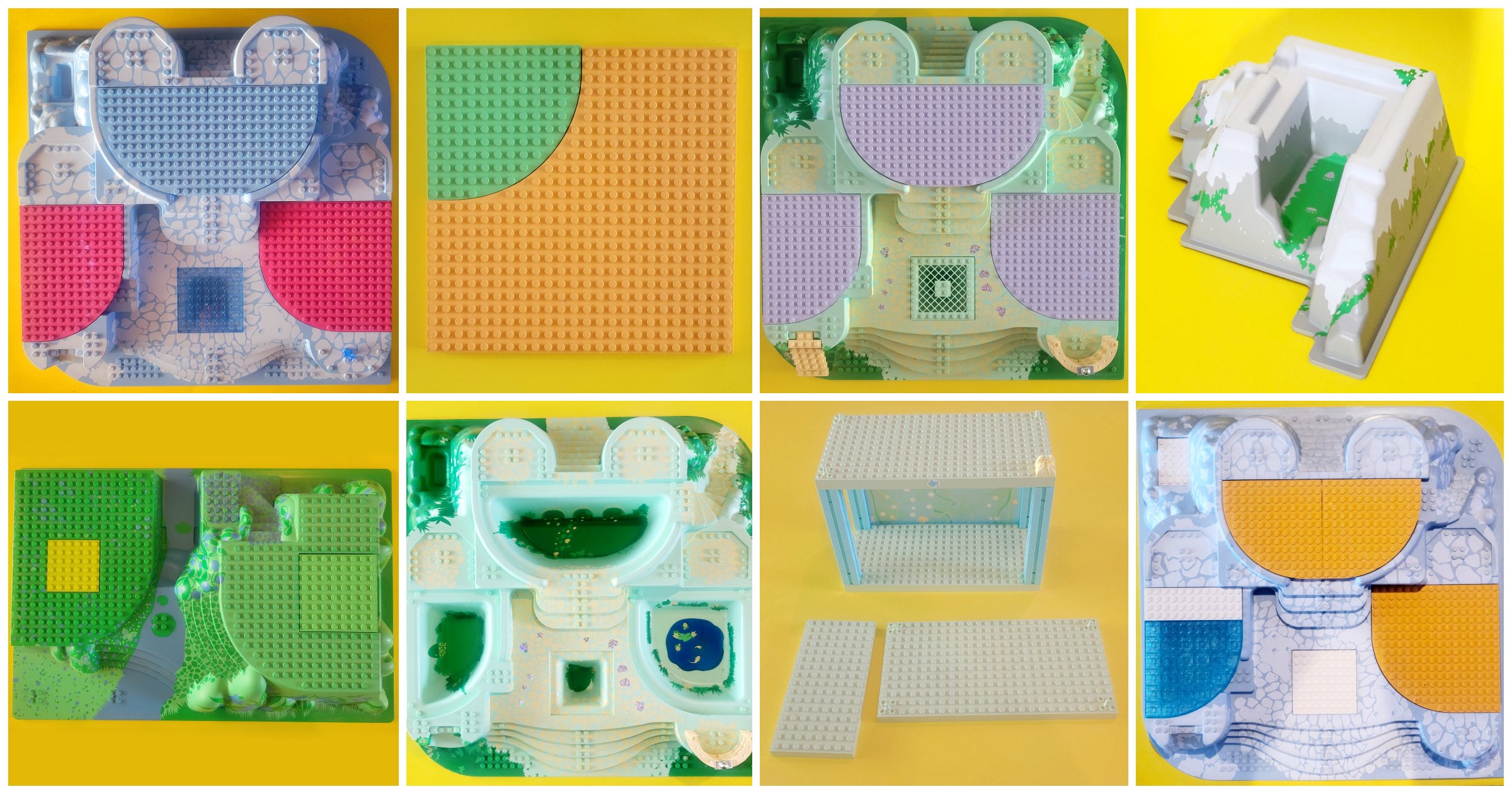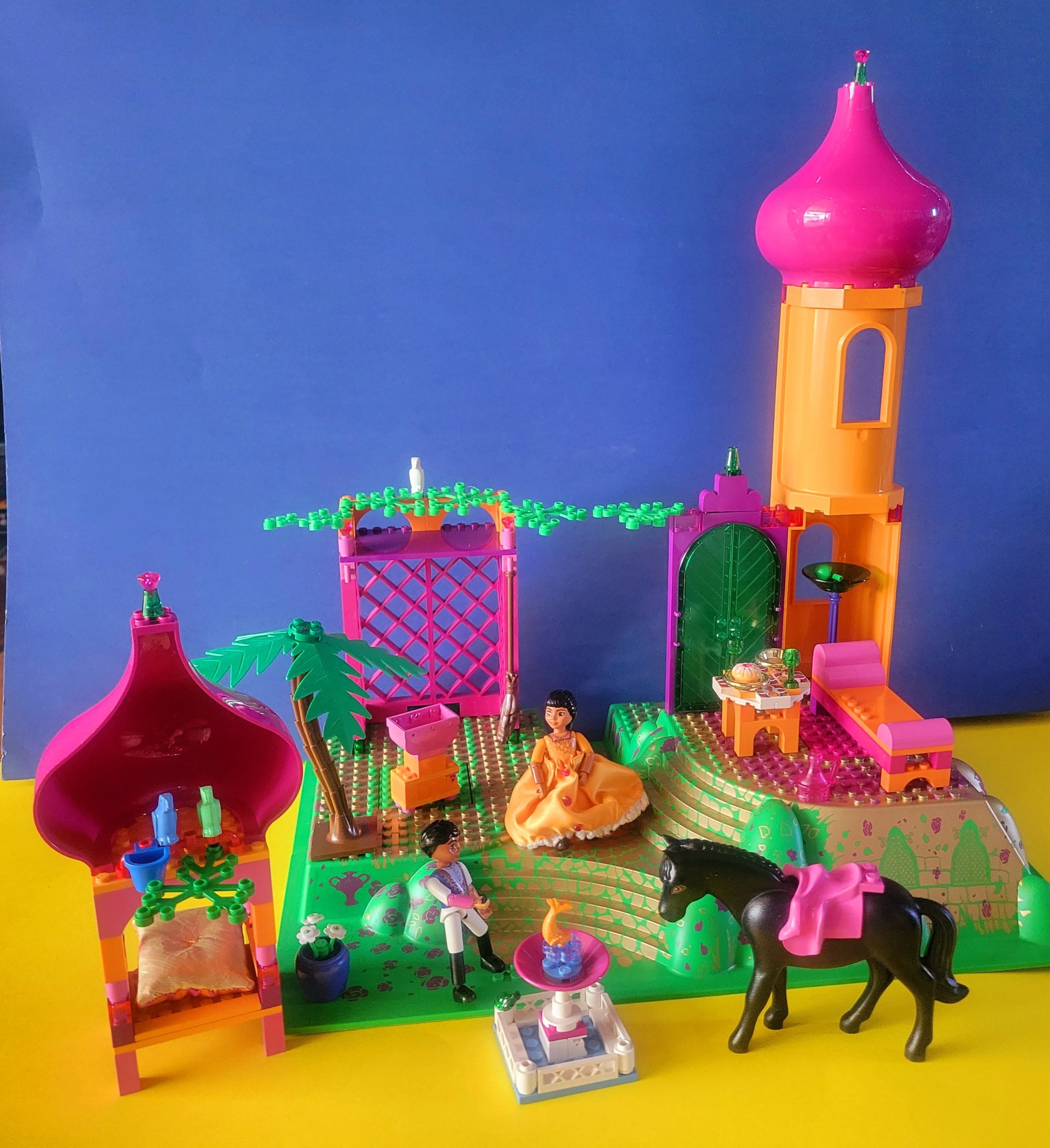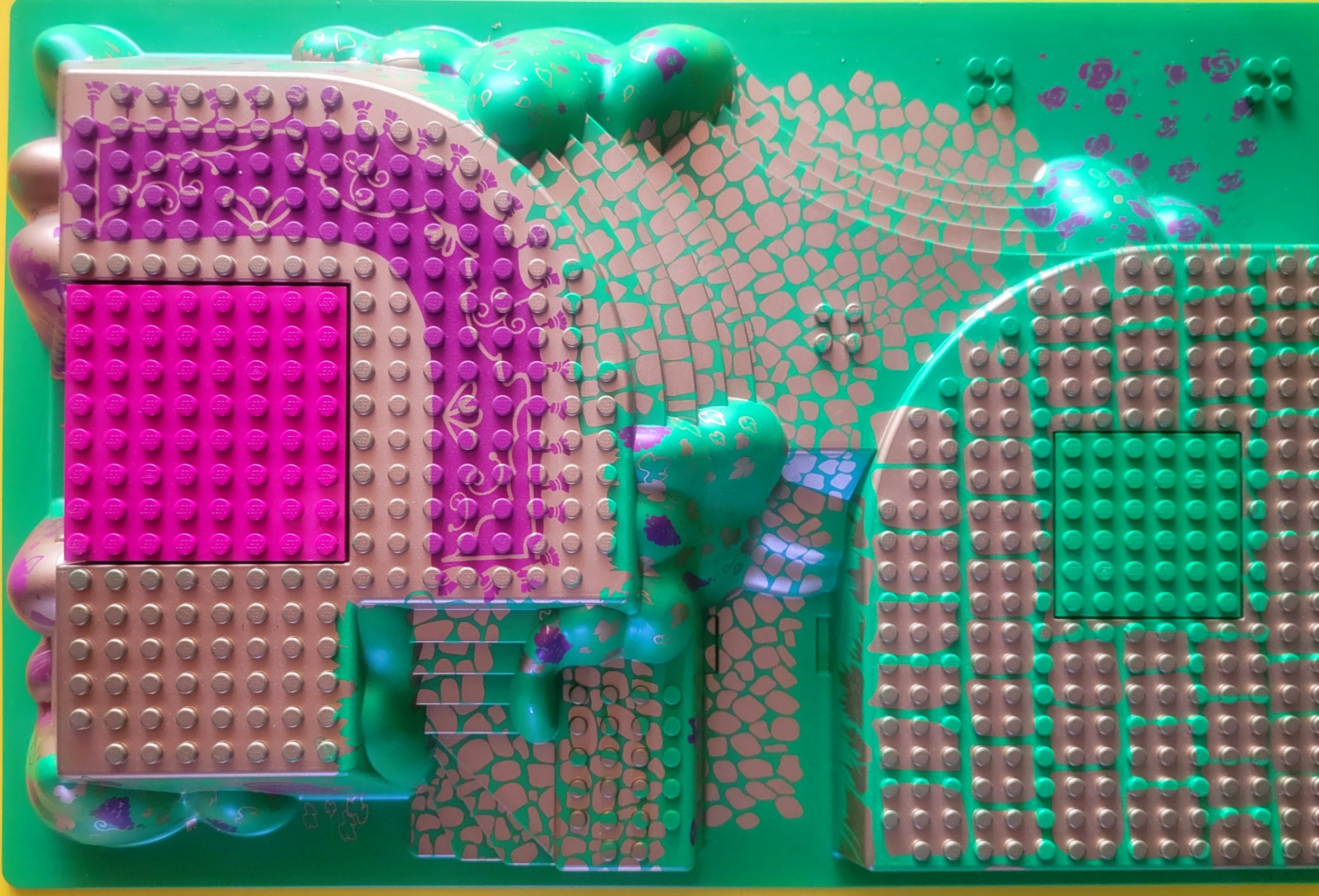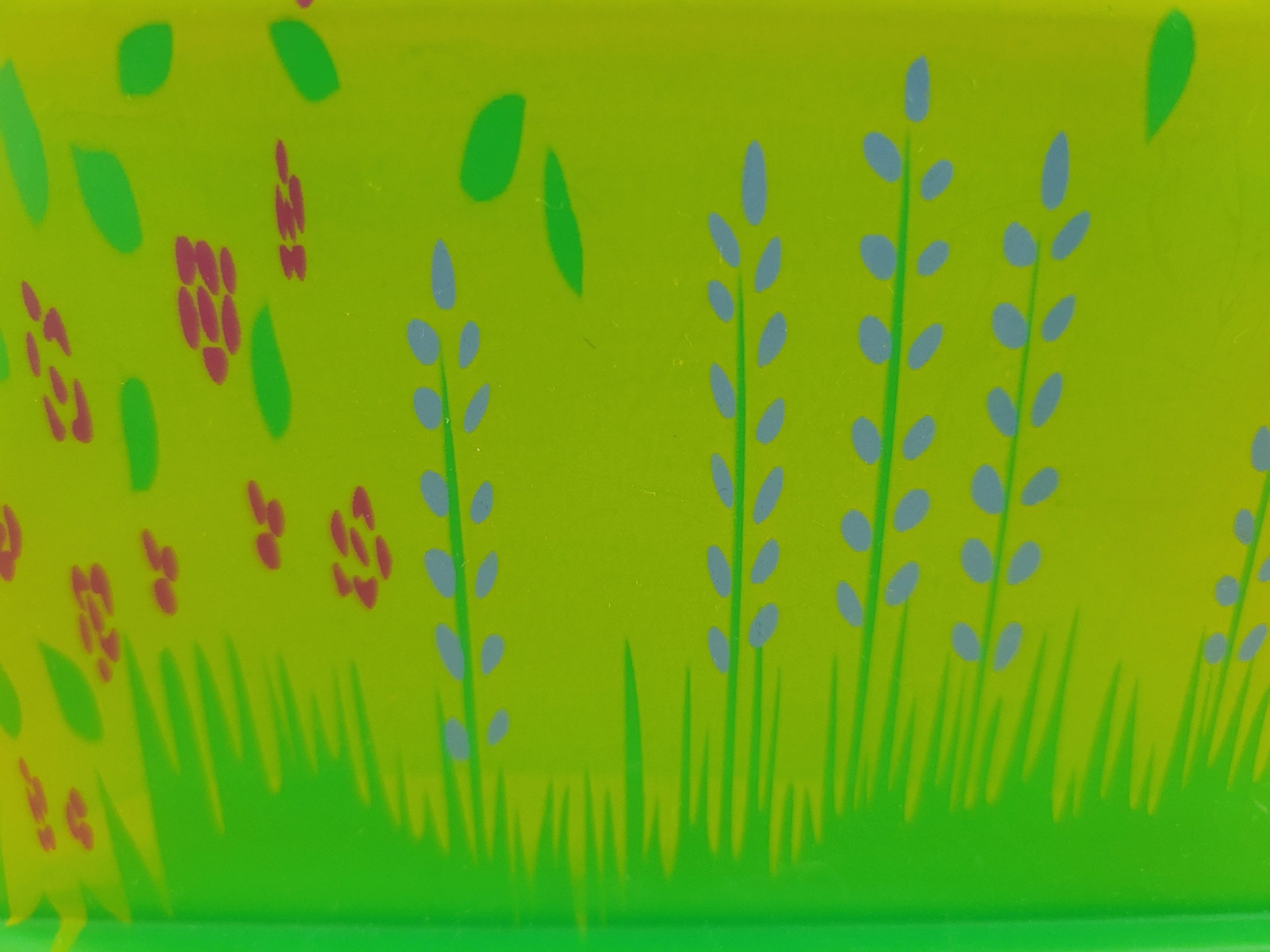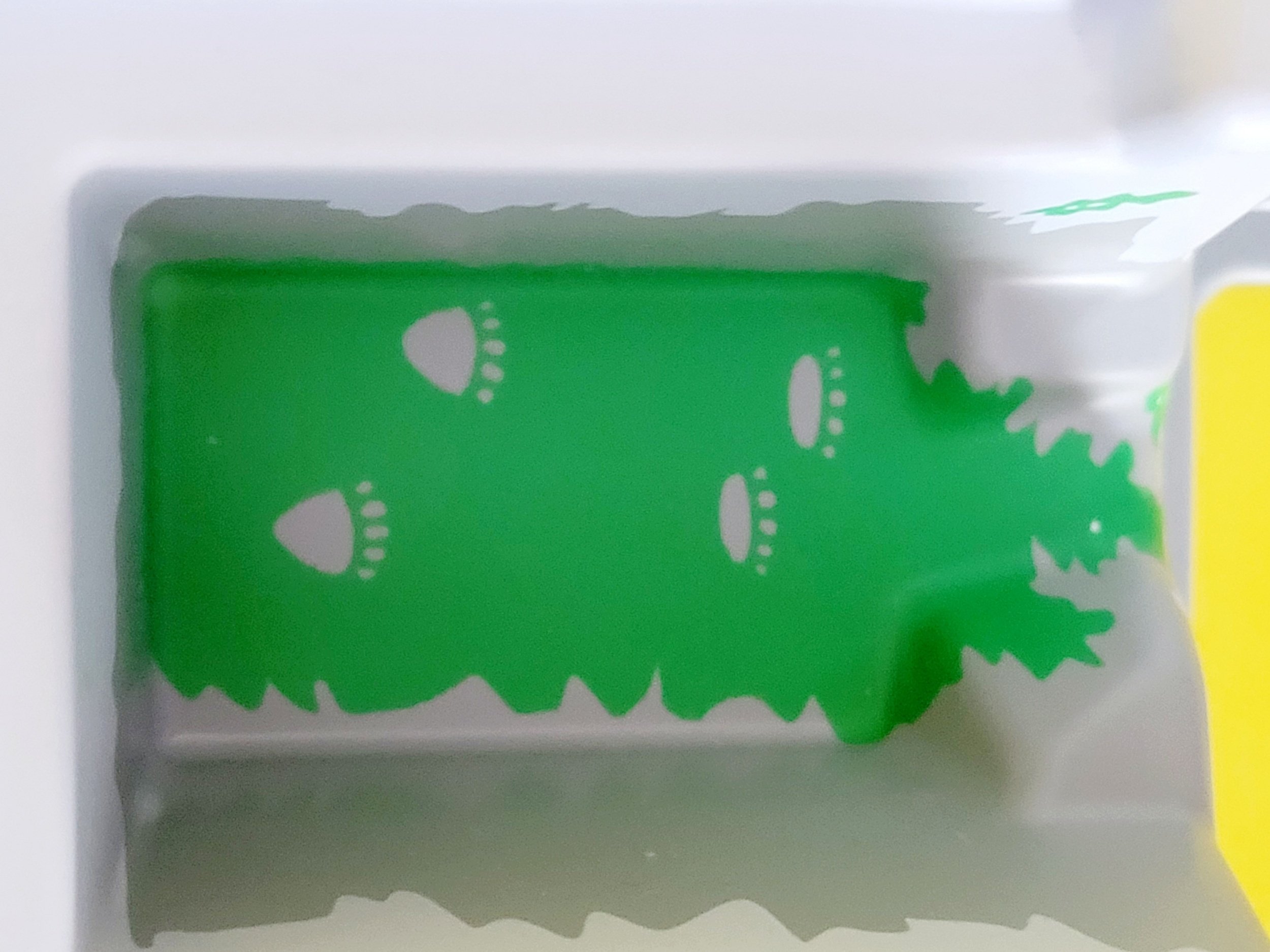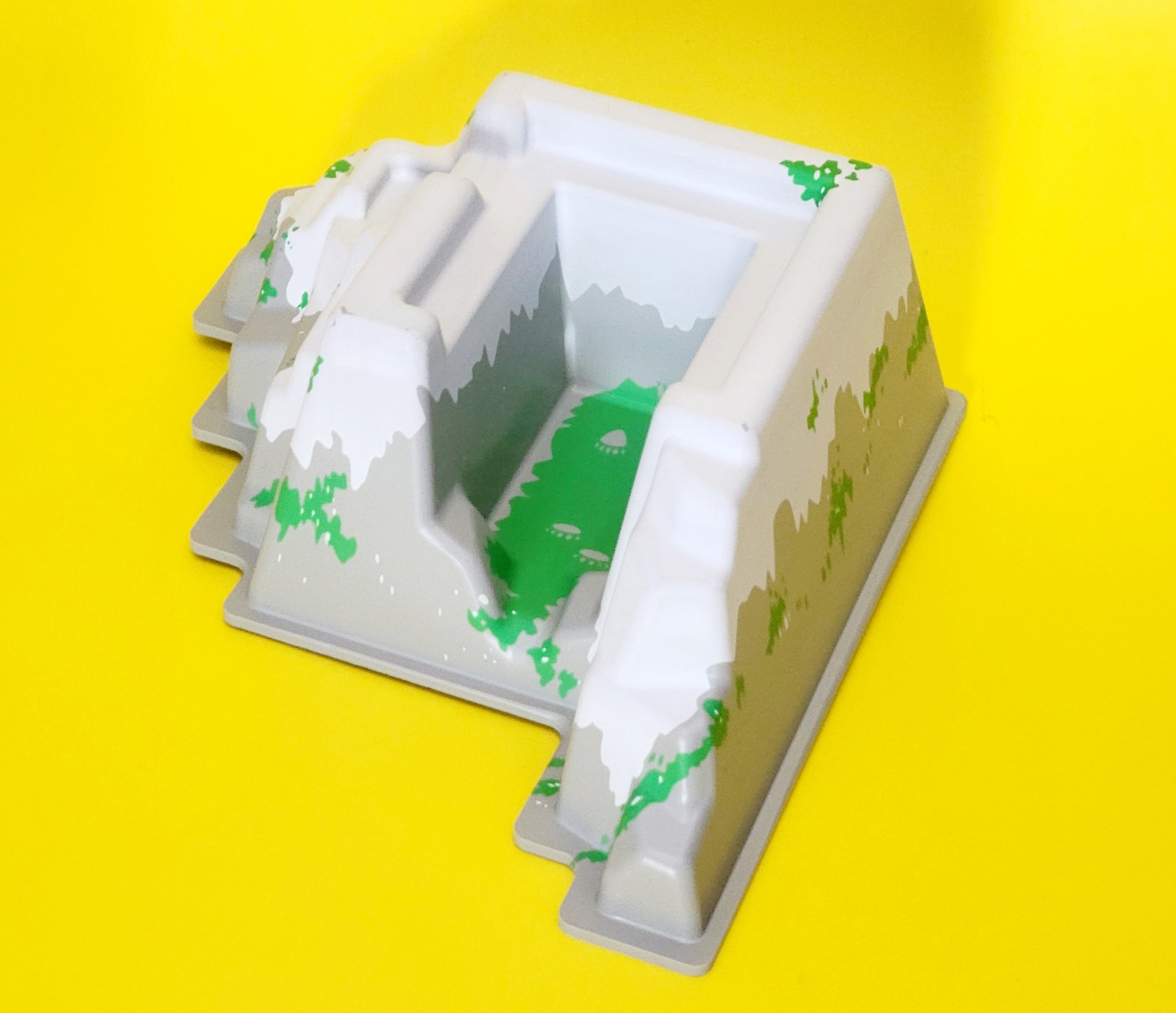Bizarre Belville Baseplates: A Fine Foundation
/Welcome back to Belville! In case you forgot, Belville is the LEGO “ghost town” that “boomed” from 1994 to 2009 and from whose ashes Heartlake City emerged. (In other words, it was the fifteen-year LEGO line designed to attract “the girl market” before Friends.)
We previously explored Belville dolls and how they fit in the LEGO figure universe. Belville is a weird and wonderful place. This month, we are going all the way down the Belville rabbit hole to the bedrock - the baseplate! - and building up the foundation from there.
(Random side note before we begin: Speaking of “bedrock,” the citizens of Belville seem to be obsessed with beds. Is Belville a land of sleep disorders? Belville manages to hide beds almost everywhere - even in the pony stable! I don’t remember seeing so many beds in LEGO city… …but that's a different rabbit hole. I digress.)
A Bevy of Bricks
Belville is built to be (in system but) different, and that makes itself immediately apparent, with the very foundation on which its scenes are built. In fact, Belville mostly isn’t built on baseplates at all. They are built on giant bricks! (There are, of course, exceptions, like The Wicked Madame Frost 5838, which uses a trans light blue 8x8 plate as its foundation. Still, that's not something you see in LEGO city.)
LEGO had been using 10x20x1 bricks since the early times, but Belville takes the OG baseplate to the next level, expanding the color palette and range of sizes. Most of these bricks are wholly unique to the Belville line.
The most popular baseplate/ basebrick in Belville is the Round Corner Brick 12x12, which is used in 23 Belville sets. It appears in some funky colors, including trans-light blue!
The 4x4 version had been a hit in the “Basic” theme for a few years before Belville, but 12x12 does not appear outside the Belville line. The 16x16 version appears in eight sets and illustrates an exception to the rule: THIS baseplate snuck out of Belville (exactly once) and appears in the original Star Wars Cloud City 10123!
Most Belville sets are vignettes built upon one of these corner bricks. My favorite use (in a set I do not own) is four 12x12 corners put together to make a Desert/Secret Island. What is especially cool about these bricks is that they fit together, like so:
I mean, they aren’t used that way in a set, but that doesn’t stop you or I for taking advantage of that fine feature.
Pillars, Pegs and Plastic Prints
In 2004, Belville introduced the basebrick with a peg. This was paired with the support pillar, support beam (or brick, pictured above), and a sheet of plastic to make the simplest kind of wall.
That pin is very important to this technique. I tried to recreate the effect once on a brick with no peg, and my cat brushing by knocked the whole thing down. With the peg and that support beam, however, it is very sturdy. Two sets involve pegs added to the big cutout circle brick discussed above.
This plastic sheet phase of building feels off-brand for LEGO, especially in the troubled times of 2004. “Why build a stable door, when you could use a plastic drawing instead?” is not a LEGO lesson to be learned. Does it appear outside of Belville? (Except for Scala?) I haven’t seen it elsewhere, but if you have, let me know.
Oh, and that 12x12 corner brick appears with a peg in exactly one set - in trans-dark pink, no less! The peg is not used in tandem with a support pillar, however, and you have to try to mask its existence with a cone. Why did they create an entirely new element and neglect to use its feature? No clue.
In Belville, sometimes it’s best to not ask questions.
Raise ‘em Up!
At last, we get to the fun stuff: raised baseplates! Brickset recently opined that the raised baseplate is “one of the most despised LEGO elements.” Perhaps that is the consensus, but we’re in Belville where the common rules don’t apply. In fact, the Brickset article omitted the assortment of raised baseplates found in Belville, making that tour a job for a real Nerd.
Do you like raised baseplates? Buckle up for some weird and wonderful CRAPP! (A slightly derogatory nickname for the elements: Crummy Ramp And Pit Plate)
Three Belville sets feature a 42x42 raised baseplate - the size of the modern large grey baseplate. (As you can imagine, the boxes that hold these sets are huge!)
Each baseplate features four spots to hold tower walls, a staircase (down which children can ski, of course), and four oubliettes that can be covered with three 12x12 curved bricks, one 16x16 curved brick, one 4x12 brick, and one 8x8 plate. There is an additional recess in the corner that can be covered with a 6x8 plate, but no set takes advantage of this feature.
Two sets are winter-themed: 2002’s Royal Crystal Palace 5850 and 2006’s Winter Wonder Palace 7577. They use the same baseplate with the same printing, although one is listed as “light blue” and one is “bright light blue”. 1999’s The Enchanted Palace 5808 is summer-themed, with a “light green” plate. Each castle is unique, with different details like furniture, but they all involve basically the same building techniques and major elements and look something like the castle above.
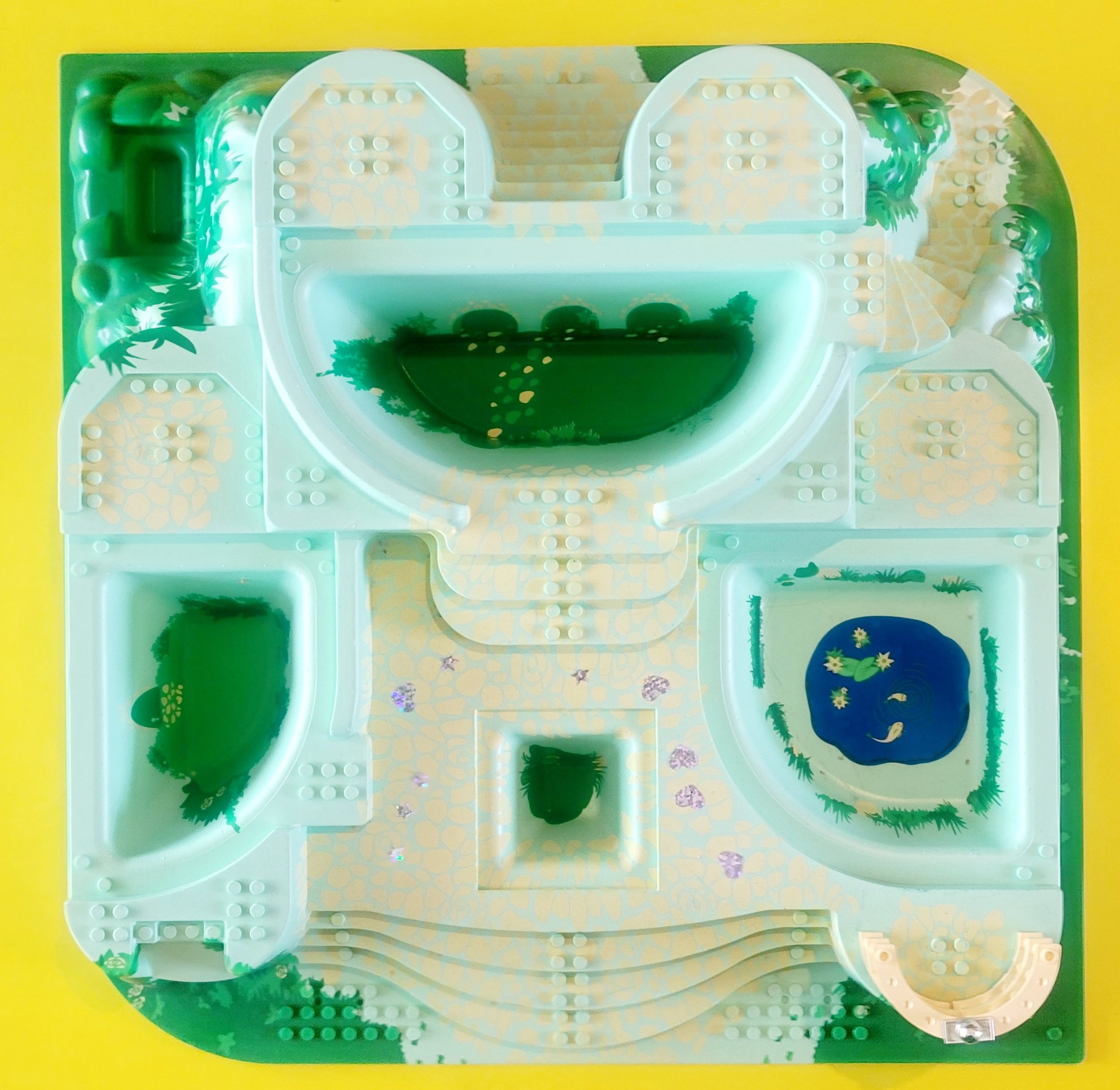

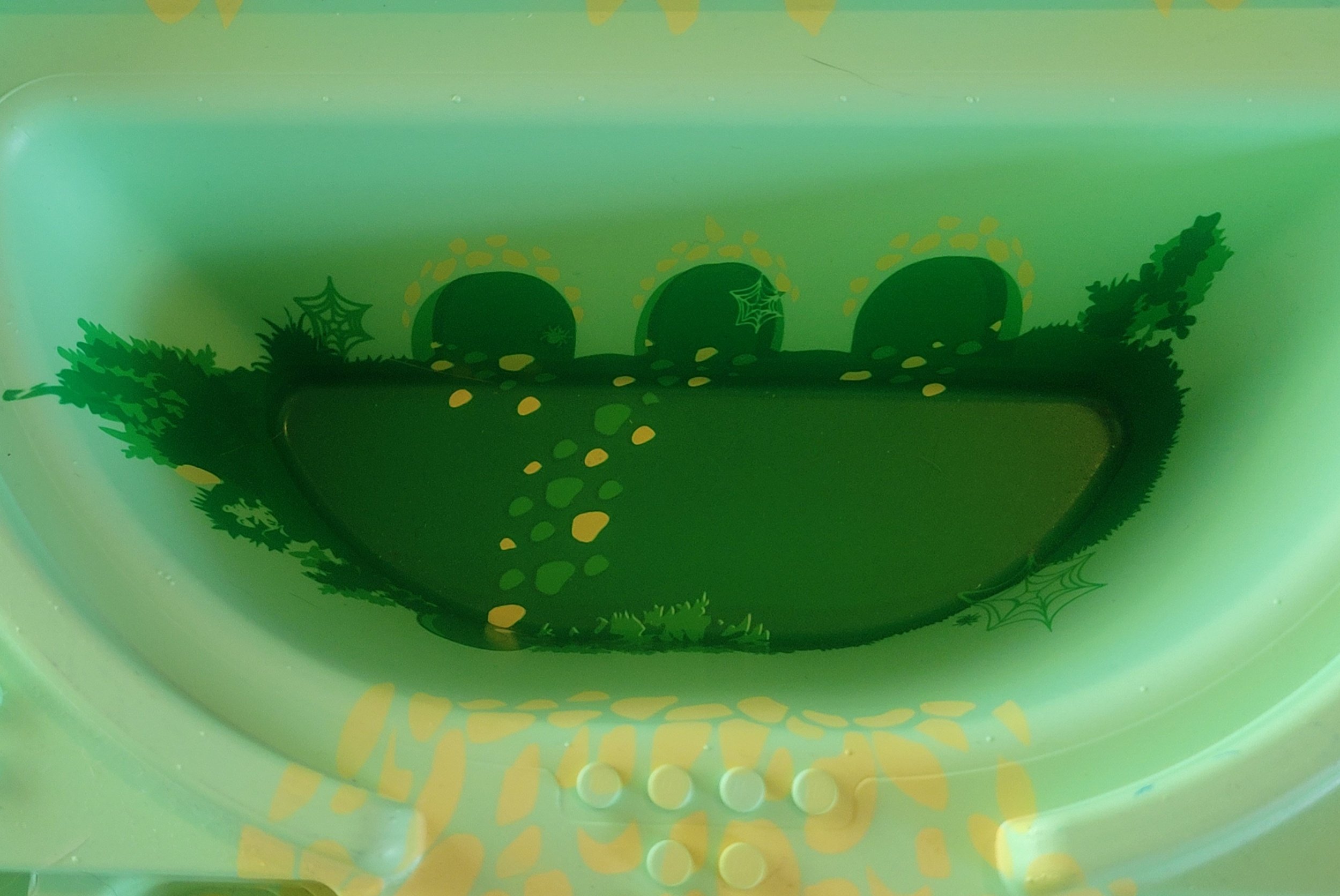
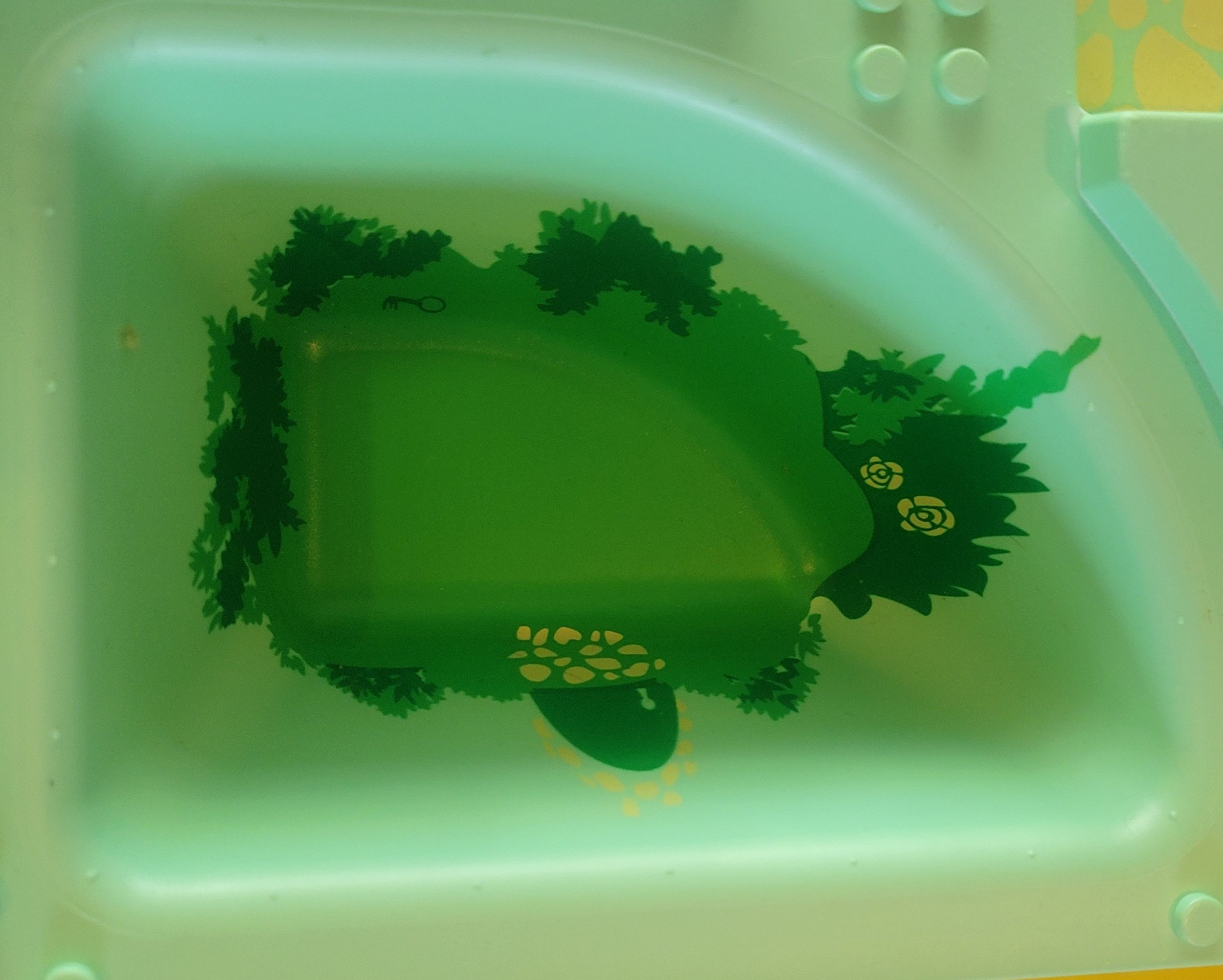
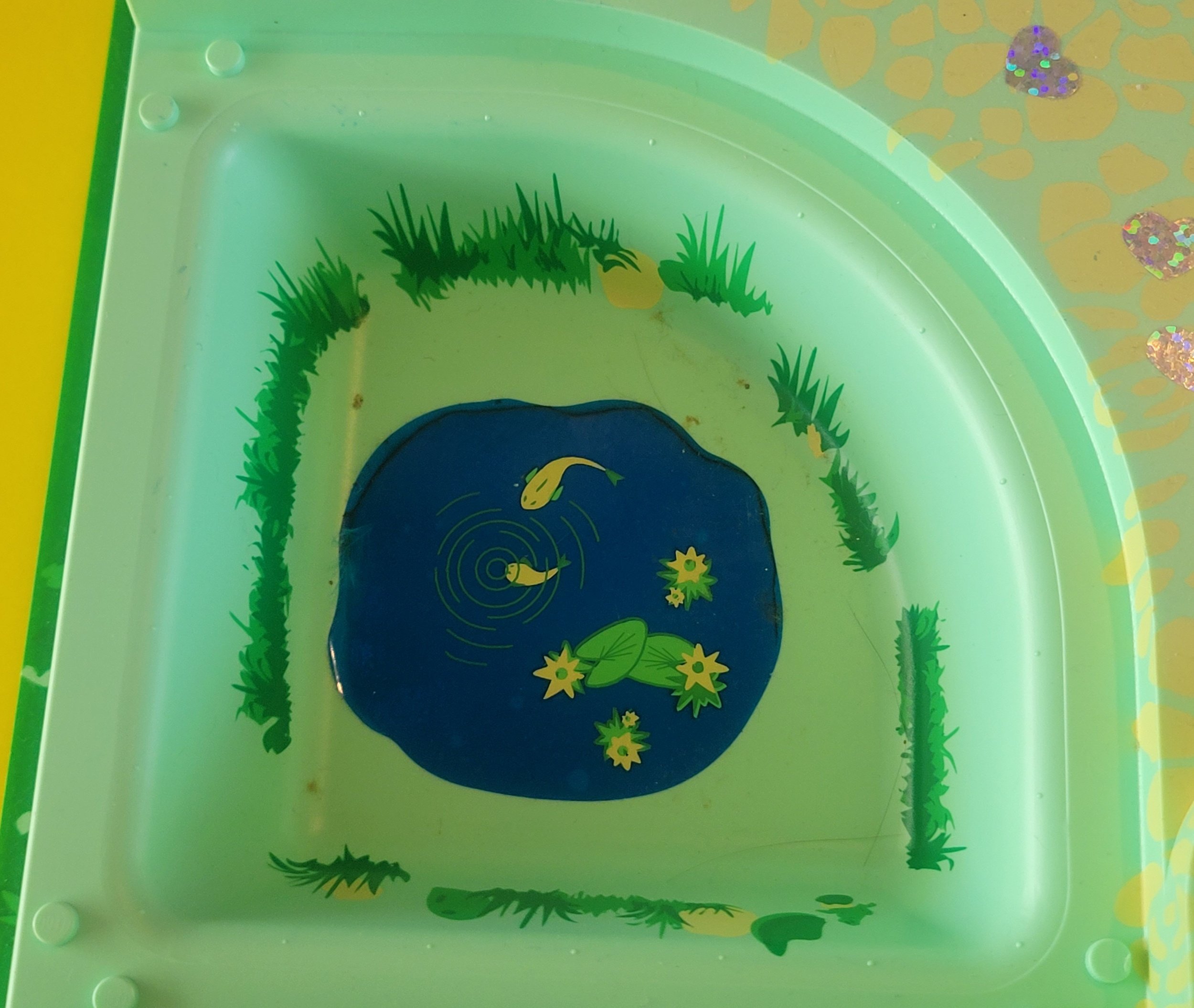
The oubliettes in the summer castle are normal enough: a koi pond and grassy recesses.
The oubliettes in the winter castles, however, are a bit more ominous. Beneath the thick baseplate bricks, you can find buried treasure, a deep well, a cracked dungeon, and even a ghost. (So very Belville!) I’m not sure, however, which of these holes was deemed appropriate for the children to practice their ice diving. (So very Belville.)
Hip To (Not) Be a Square
Three Belville sets (and one not-Belville set!) feature 32x48 baseplates of the same mould, but each with different colors and unique printing. Each baseplate features one hideaway spot that can be covered with an 8x8 brick and an oubliette covered with a 6x6 plate. These sets could not be more different from each other, despite being built on the same shape of raised baseplate.
The first of these sets is The Golden Palace 5858.
“This looks like it’s trying to be Aladdin,” my son declared when I brought it home. “Only… it’s not Aladdin.”
Indeed. And while I’m glad that LEGO and Disney have a proper licensing agreement now, this set has a ton of non-licenced charm, in particular the printing on the baseplate. The colors are magical - maroon and medium green - and that golden pathway! A lizard hides in the oubliette. You can serve me up a heaping pile of this CRAPP any day of the week.

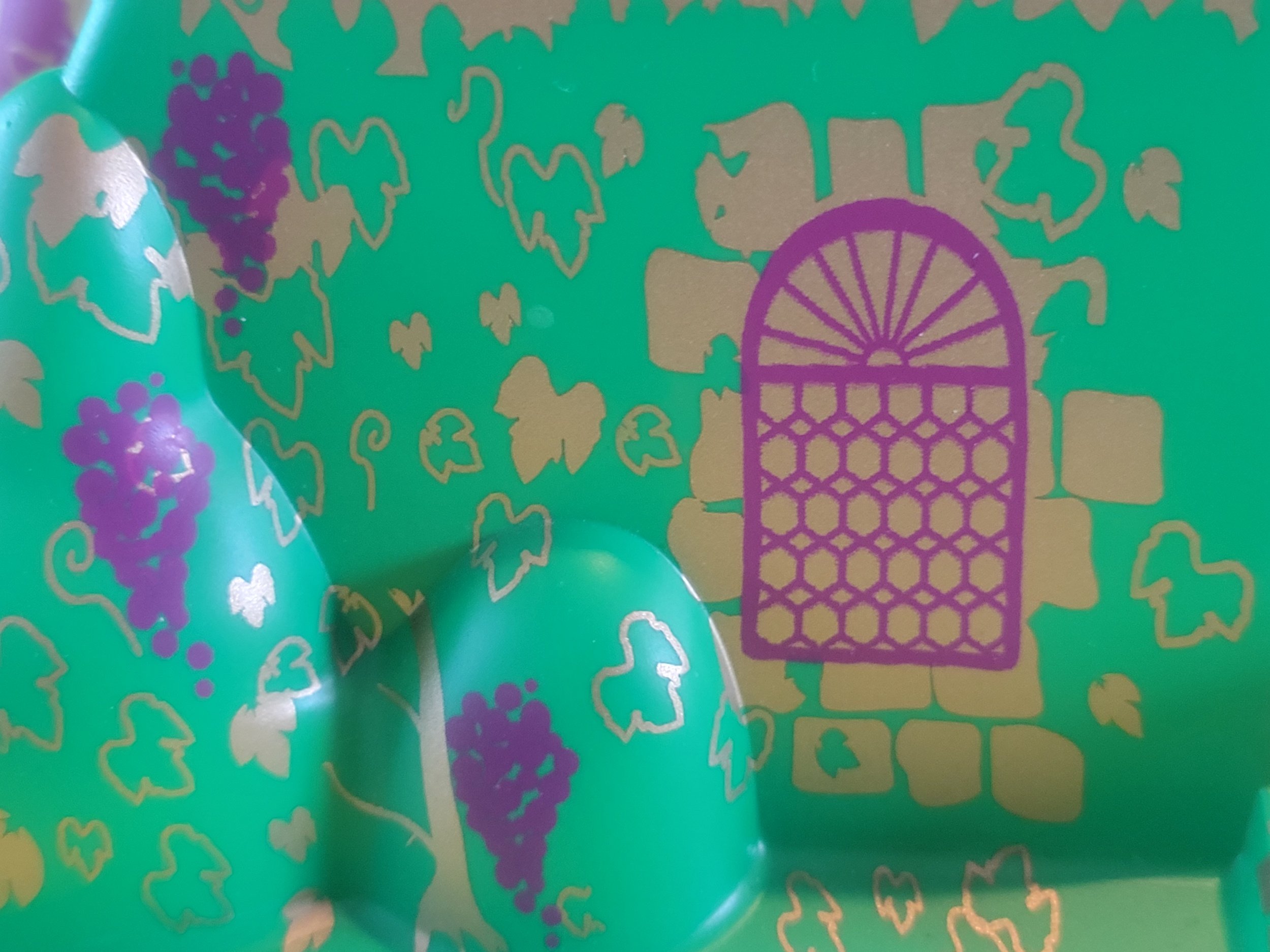

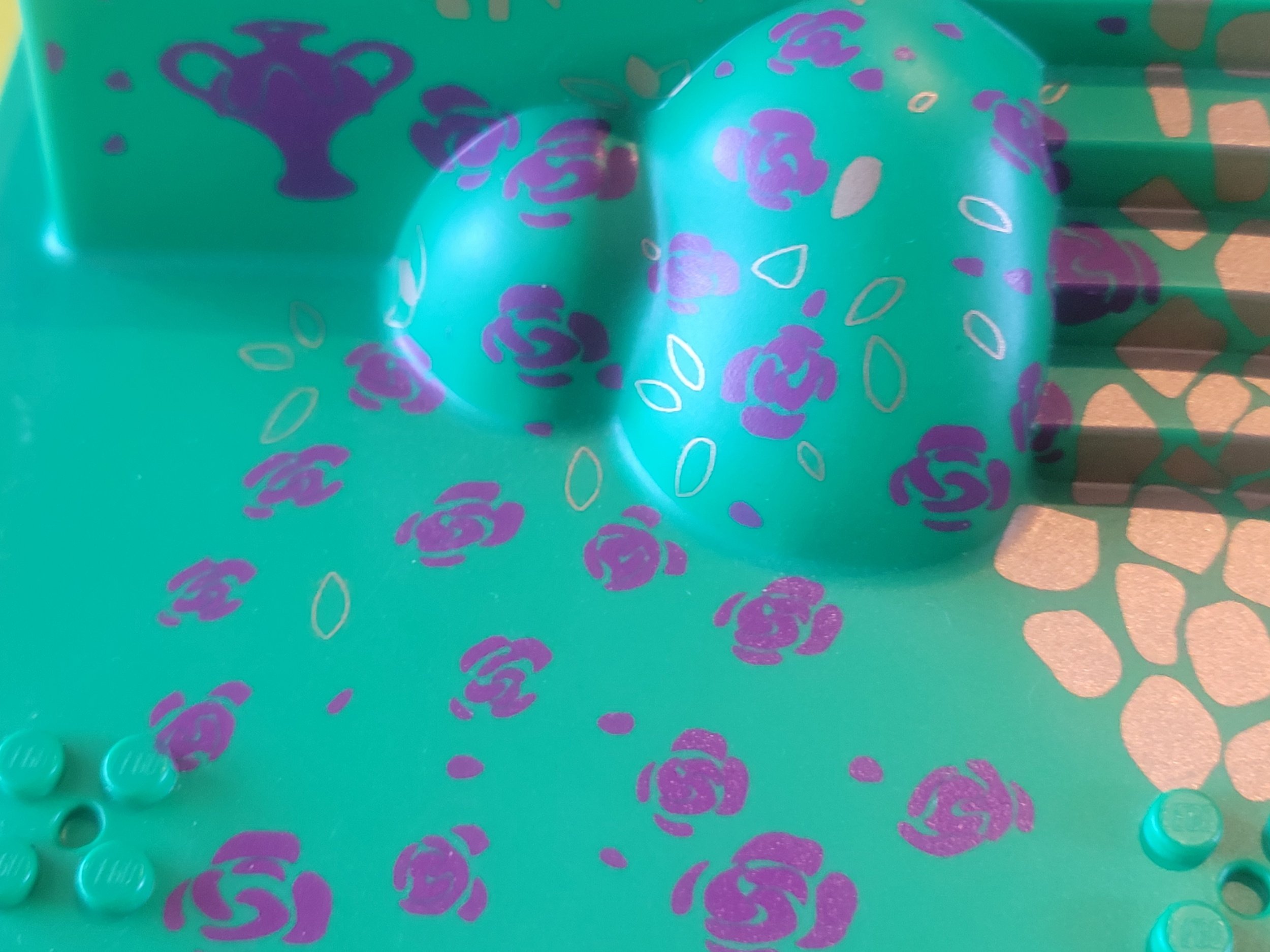
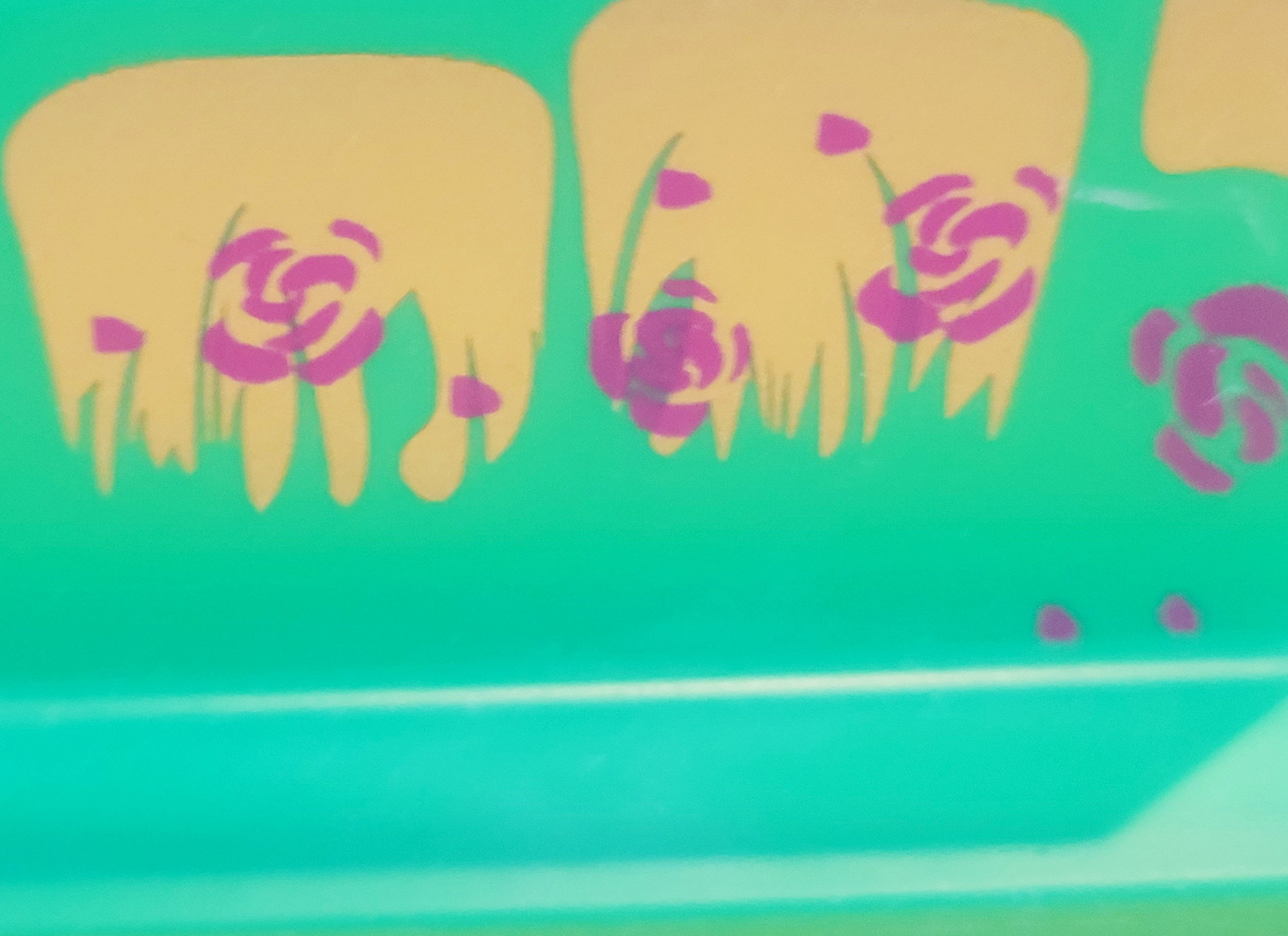
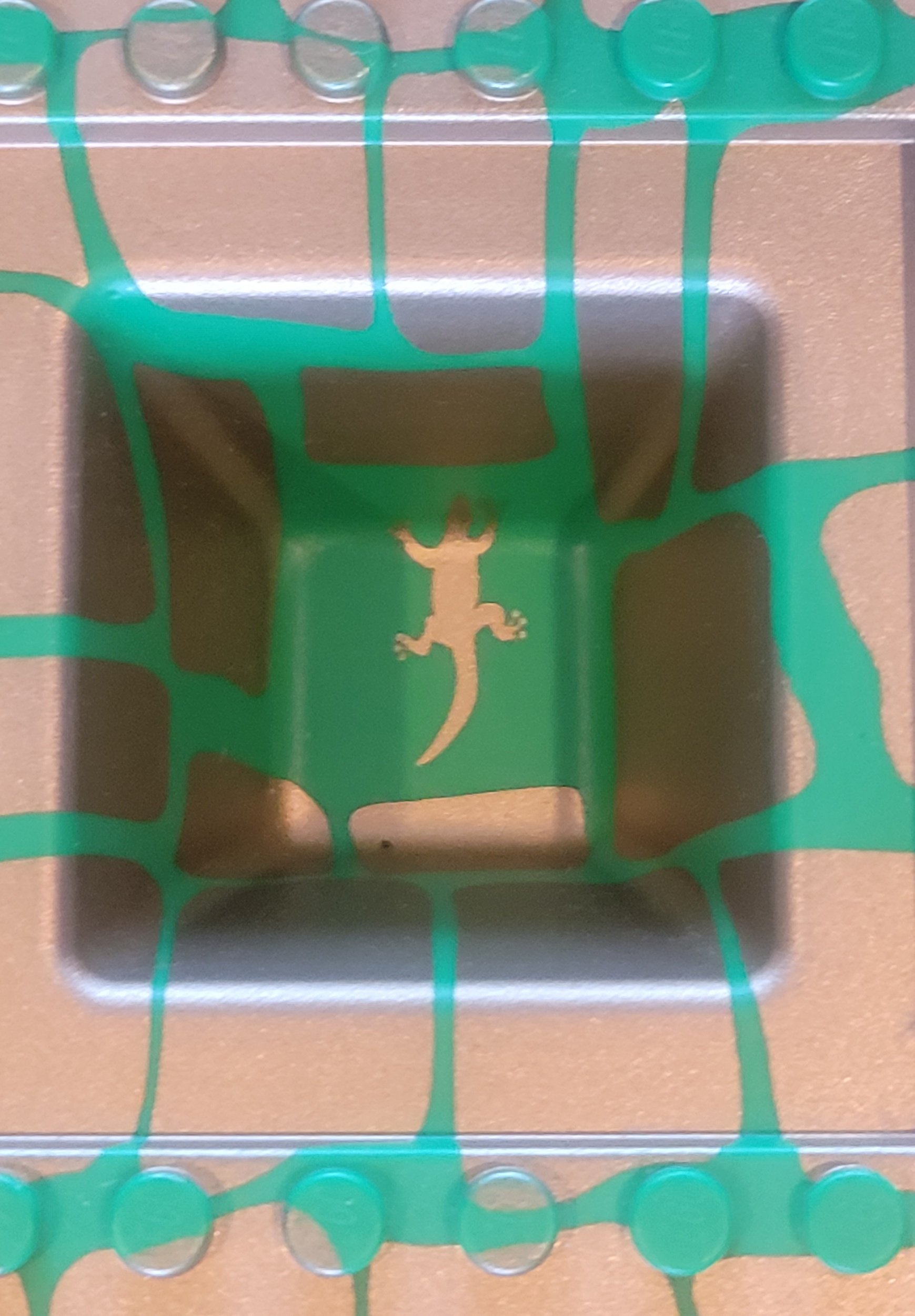
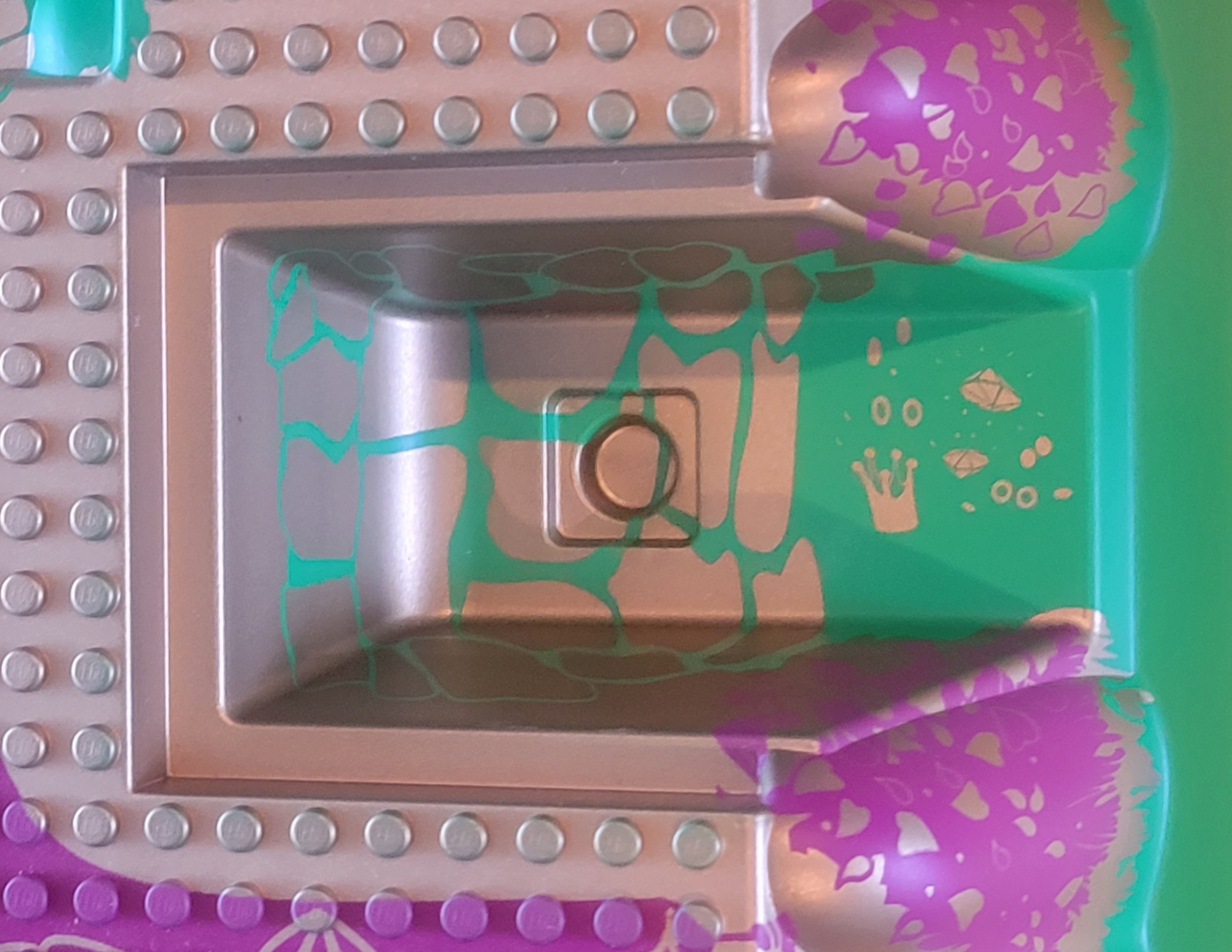
Next in our raised baseplates rundown is the absolutely stunning Flower Fairy Party 5862. A frog and turtle hide in the crevices.
Personally, I adore this set from start to finish, but the baseplate as a standalone piece rests especially easy on the eyes. It barely looks like LEGO, with its mild shades of green and violet. Belville is weird and wacky, but what a magical world it can also be. (Hardly creepy at all. Sally Slow snail notwithstanding.)
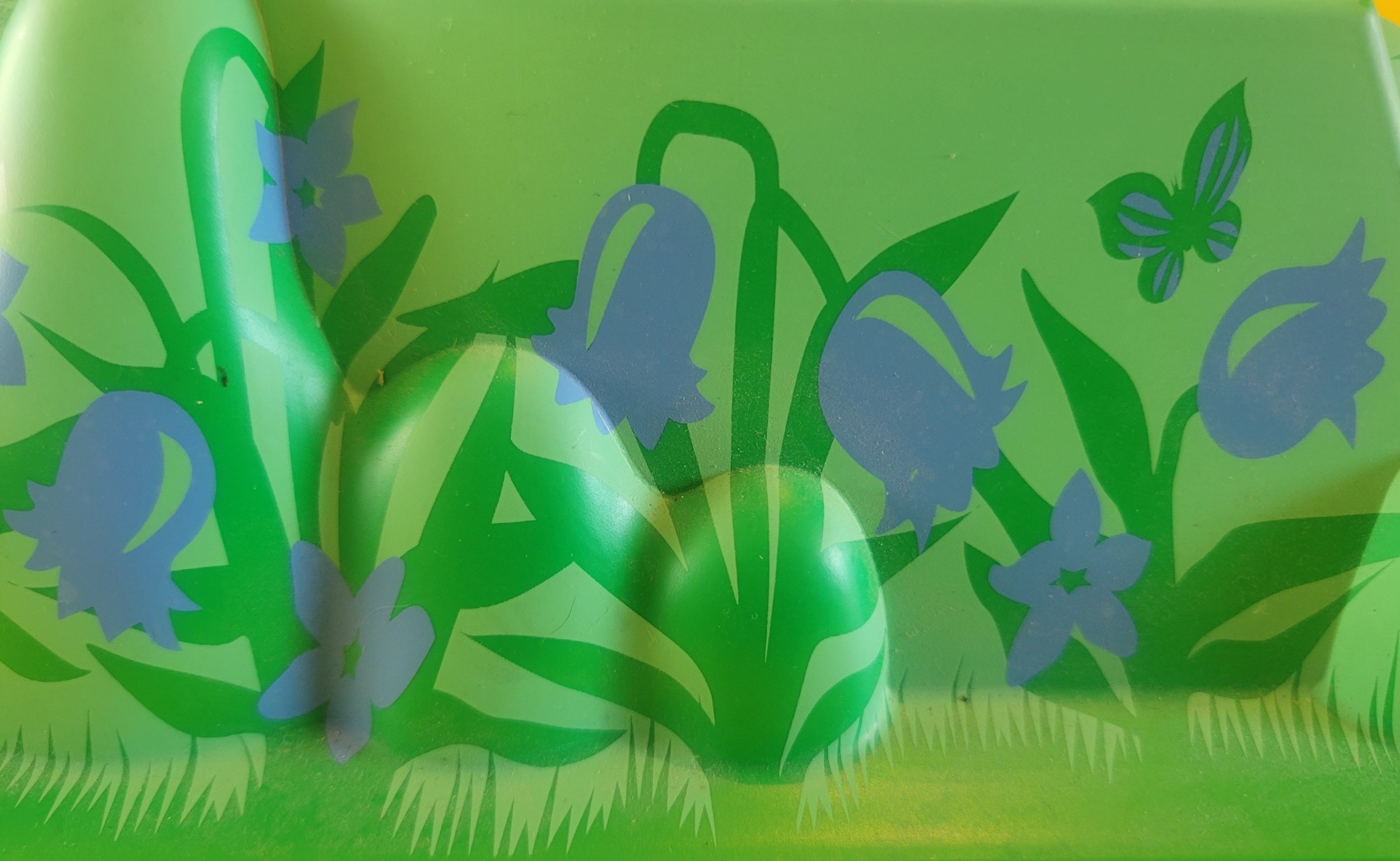
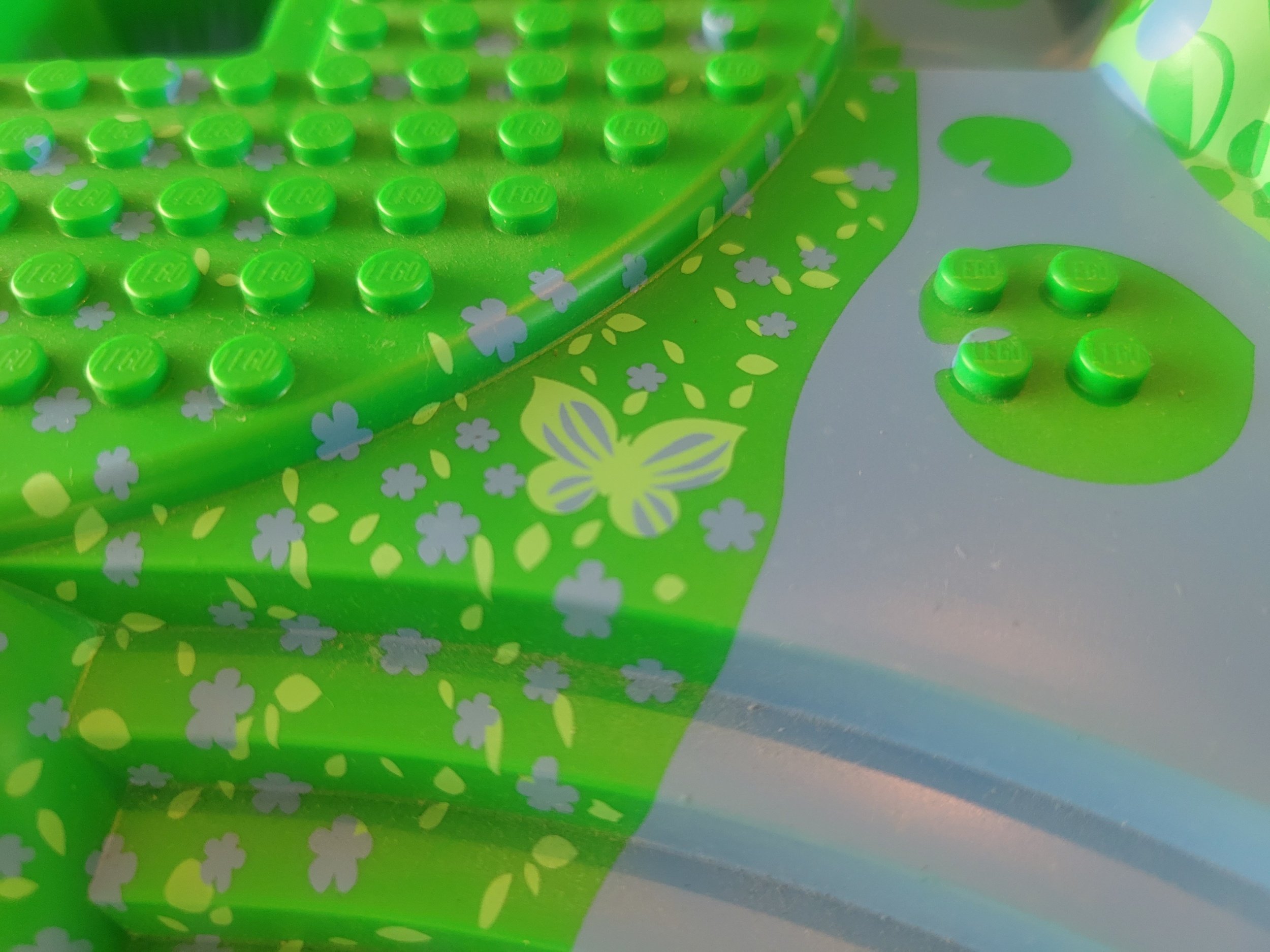
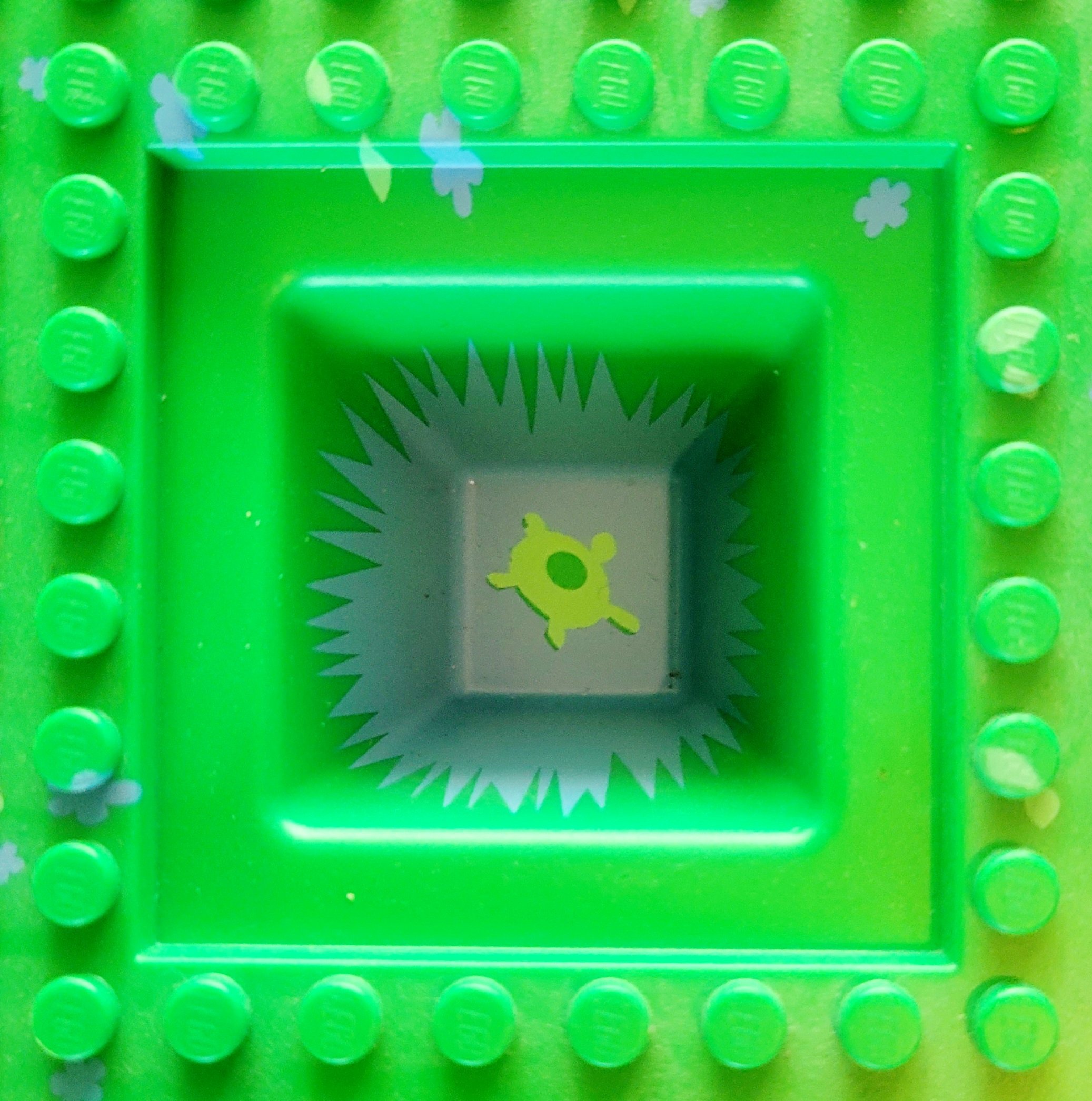
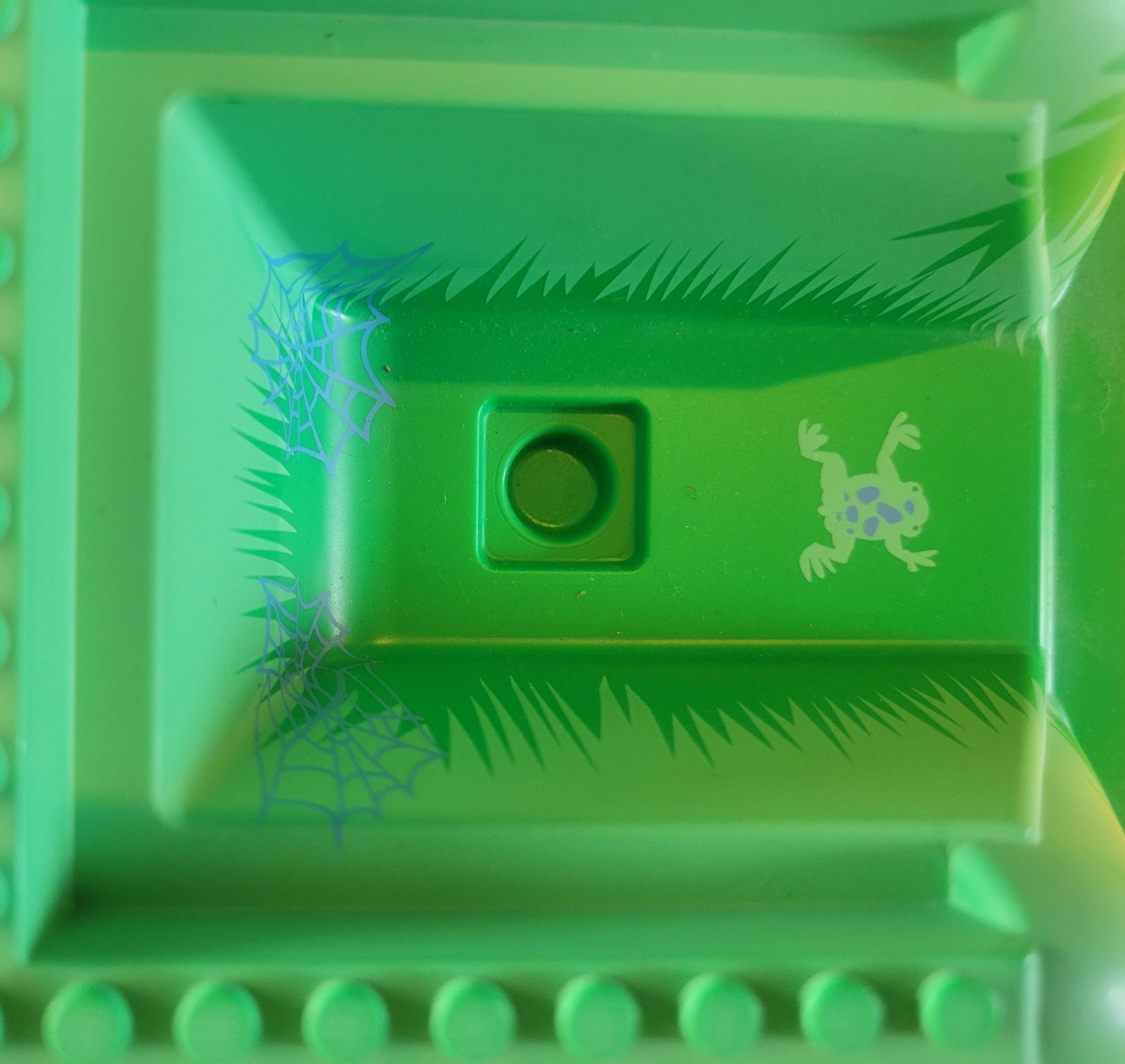
The final set to include this shape of baseplate? Well, the Royal Summer Palace 7582 remains elusive. I have not seen the baseplate in person. We will have to be content with this stock image from BrickLink. This baseplate seems to only involve one printed color, which would be… less glorious than the others.
The image below, however, mostly what this set looks like. I built it on the Fairy Party baseplate, and I found most of the major elements in the correct colors: Let’s imagine that the queen and baby have taken the cake for a boat ride. Which is a completely plausible story in the world of Belville.
The Summer Palace set from 2007 (the others were 2004) uses some building techniques new to Belville. It looks more like a modern Disney Princess castle.
Alas, in 2008, the final wave of Belville sets began to be built on “normal” baseplates. You can feel the transition to Friends, even as Belville dolls clung onto their oversized scale. Such marks the end of the Belville era.
Going Soft
Before we go, however, let’s explore one final unique solution to a baseplate found (to the best of my knowledge) exclusively in Belville.
In 2001, The Enchanted Garden 5834 was built around a “cloth playmat” and involved a weird little bit of a raised baseplate, 22x22x10.
Above is an approximation of the set with most of its defining features.
You won’t find any ghosts or turtles in this cave - just a few berries, but it does feature the gorgeous printing typical of the raised Belville baseplates. One covers the cave with an 8x8 brick. It’s worth noting that the cloth playmat feels to be of very high quality. It reminds me of the Elves playmat but printed on a high-end scarf.
This same shape of baseplate was also used in a Scala set, Carla’s Winter Camp 3148, with winter themed printing, including bear tracks in the cave.
All of the raised baseplates mentioned in this article stack neatly on top of other baseplates of the same size, as you can see above. Which makes storing them a little easier?
Overall Belville may have had slightly unnerving dolls and oddly shaped bricks that challenge even the modern LEGO-sorting fan, but the base of the theme—the very foundations it was built on—still stand strong. I look forward to seeing some of these unique and beautiful baseplates in future MOCs, and until then, I hope this has stacked up to be a CRAPP-tastic tour through the bottom edge of Belville!
Best of BrickNerd — Article originally published March 7, 2022.
Do you have any of these unique baseplates? Have you ever built any MOCs with them? Leave your thoughts in the comments below.
Do you want to help BrickNerd continue publishing articles like this one? Become a top patron like Charlie Stephens, Marc & Liz Puleo, Paige Mueller, Rob Klingberg from Brickstuff, John & Joshua Hanlon from Beyond the Brick, Megan Lum, Andy Price, Lukas Kurth from StoneWars, Wayne Tyler, LeAnna Taylor, Monica Innis, Dan Church, and Roxanne Baxter to show your support, get early access, exclusive swag and more.

